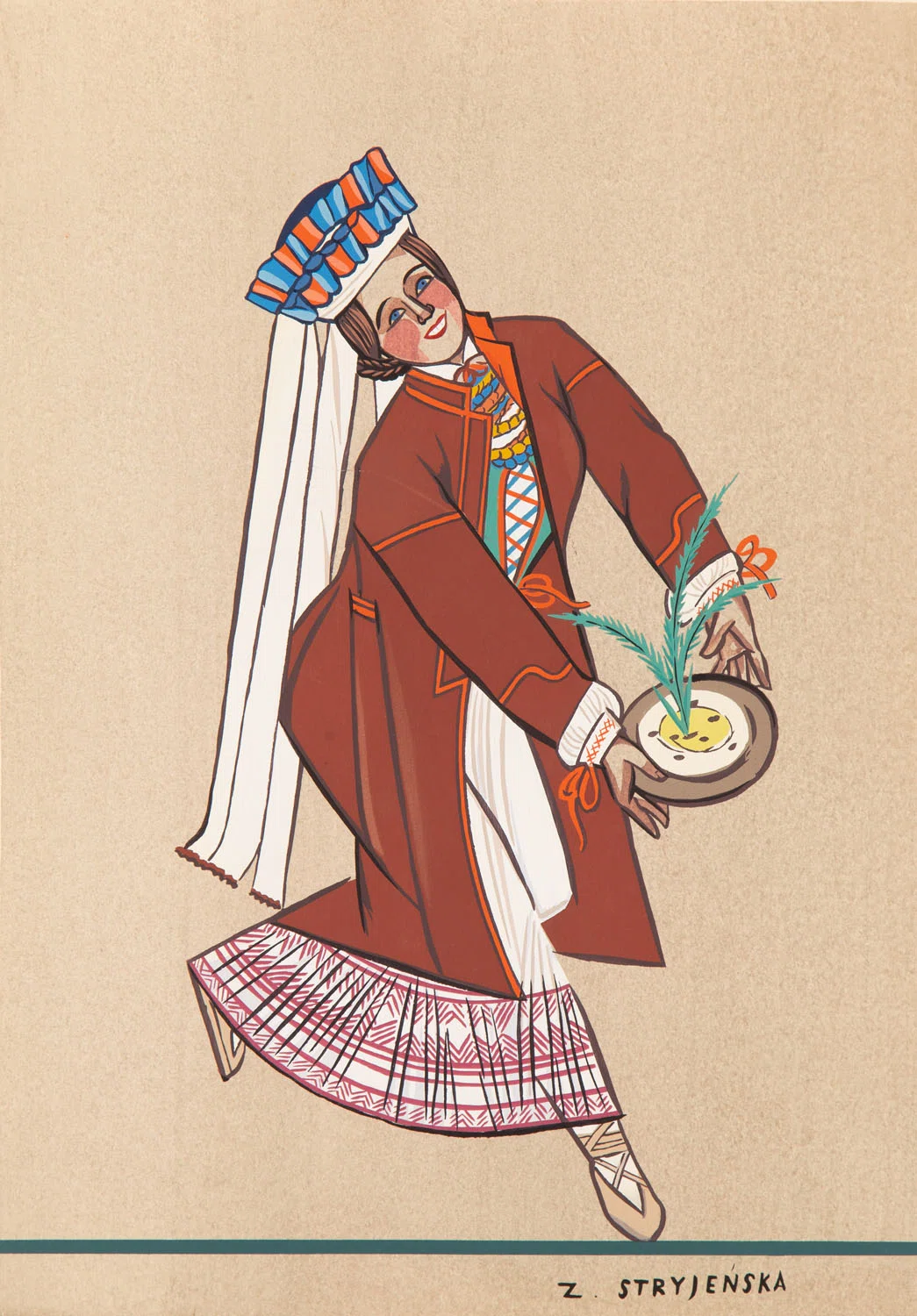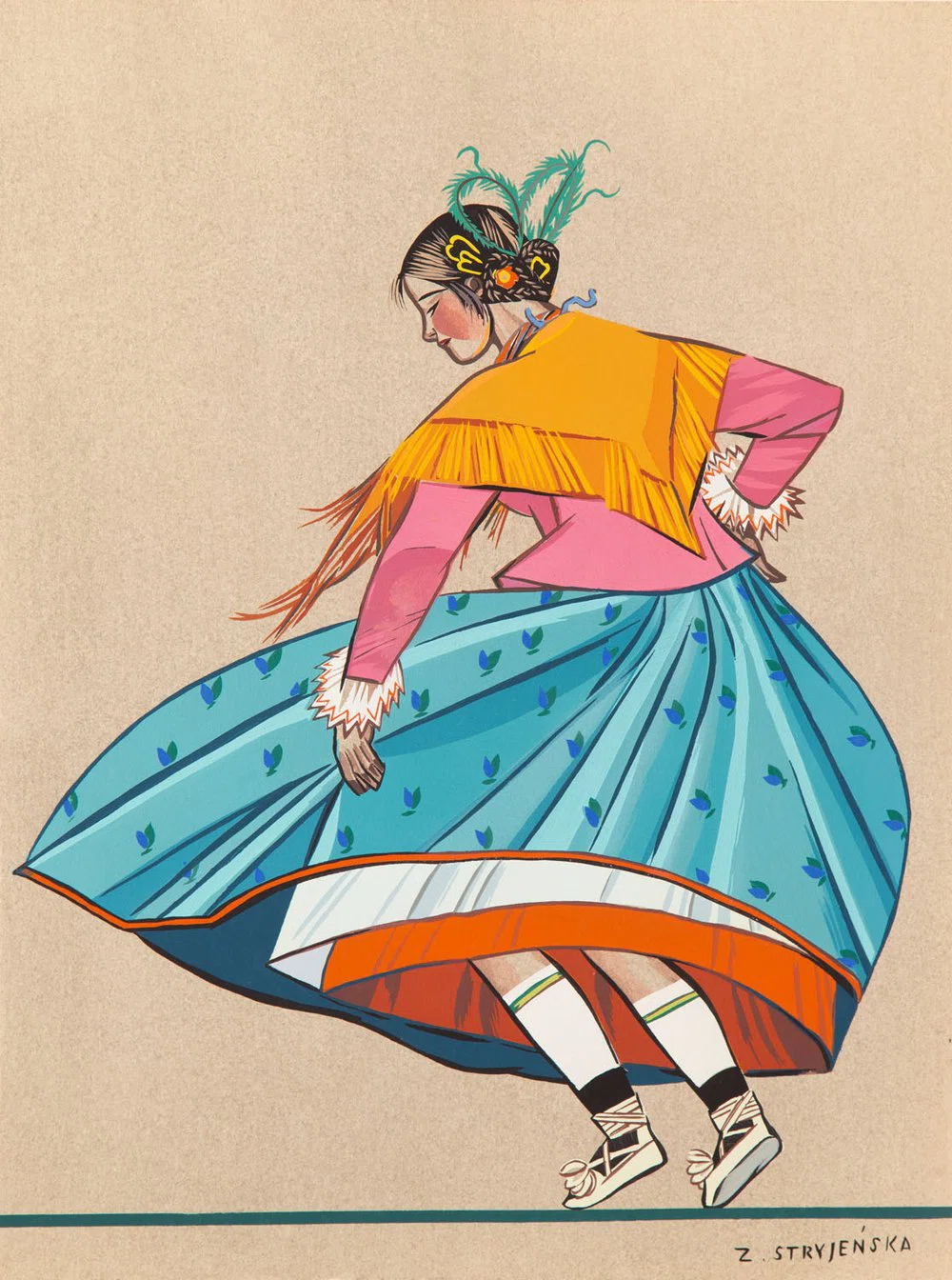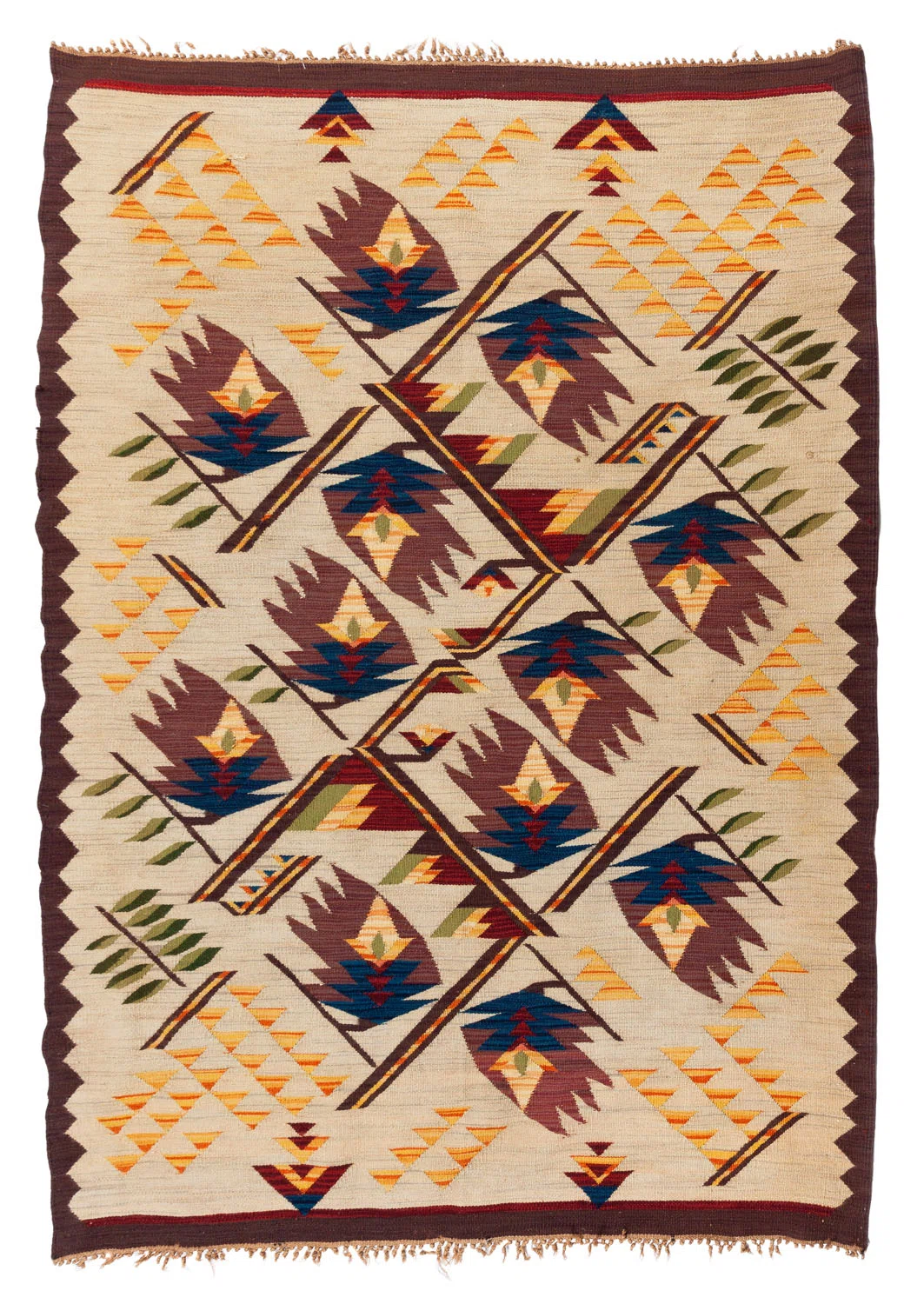Zofia Stryjeńska: elegance and folklore
In the interwar period, Zofia Stryjeńska was one of the most popular Polish artists. The paintings of "princess of Polish art", full of diversity and color combinations, perfectly harmonized with the artist, her extraordinary creative energy, and her wealth of ideas. Being a multi-talented artist, Stryjeńska created easel paintings, as well as drawings and graphics. She also designed decorations, posters, illustrations, and toys.
Stryjeńska's painting style combined elements characteristic of both art déco and Polish folklore, which made her works immediately recognizable and unique in Poland and around the world. Her art was based on stylistic and thematic inspirations from Polish, especially highlander, folklore. A characteristic element of the artist's paintings is an unorthodox perspective on folk tradition. Stryjeńska freely approached old Polish rituals, customs, and Slavic mythology, her unlimited imagination allowed her to combine various themes and play with folk motifs.
"Goral Woman with a Pitcher" is an excellent example of work that draws inspiration from folklore. "The characters she created - lively, emanating energy, panache, and vigor, colorful, and dignified - were to reflect the spiritual values of the Polish peasantry. Contemporary critics of Stryjeńska noticed that the artist makes use of folk art and its most significant features with an amazing intuition, combining fantasy with a deep sense of life, and poetic irrationalism with frank humor"(Justyna Słomska, O Ludowości, [in:] Zofia Stryjeńska 1937-1976, Krakow 2008, pp. 262-264). The key element in Stryjeńska's works is color, which constitutes one of the key elements in the rhythm, characteristic of the artist's paintings. At the height of her fame, Stryjeńska, when asked about her interest in folk themes, replied, "Only there you can find color. (…) Our life is terribly gray. Even the city taxis are gray. Your clothes, you, unfortunate men, are a parody of color, which I need and search for, just like a musician seeks a melody. You need to go to the countryside to find color because countries where there is still a lot of it, the exotic ones, the global center of corals, are unfortunately too far away and inaccessible to us". The artist used pure color and very limited chiaroscuro, not aspiring to render the world realistically, but instead leaning towards decorativeness, which at the same time guaranteed artistic and commercial success on a large scale. This decorativeness also included a selective approach to folklore inspirations, Stryjeńska did not duplicate folk costumes, but only chose aesthetically appropriate elements, creating a new and original whole out of them. "The characters created by Stryjeńska are almost always dressed in rich and adorned costumes, like aristocracy, though still in a style typical of the countryside. She often transforms these folk costumes in an almost fantastical way, creating constructs that never existed in the Polish countryside (...) Her knowledge of folk costumes came from observing museum exhibits and exhibitions (except for Podhale, where she often traveled)" (Justyna Słomska, ibid., p. 140). In the works of Zofia Stryjeńska, we may distinguish two main approaches of presenting her characters: the first depicts genre scenes from folk-life, such as highlander dances, while the second one includes slightly more static, decorative compositions displaying an individual silhouette of one personage. The presented "Goral Woman with a Pitcher" belongs to the second category, but it is not a static work. Stryjeńska avoided simple poses, and so the highlander with a pitcher was portrayed as if dancing, which seems to give her a distinct, joyful vigor. The presented work celebrates the simple folklife as a path to happiness and an expression of vitality that the artist had been longing for all her life. "As in folk art, the conventionality of the characters' movement is consciously marked in a symbolic, simplified manner. In her works, the artist resigned from the conventionality, motionlessness, and hierarchy of characters so characteristic of folk painting. Inspired by folk themes, often using multi-layered representations, she always presents them in fast-paced action, with the characters having individual facial features. In this way, she diversifies the compositions and makes them more attractive. (...) "The characters created by Stryjeńska are almost always dressed in rich and adorned costumes, like aristocracy, though still in a style typical of the countryside. She often transforms these folk costumes in an almost fantastical way (...) " (Justyna Słomska, ibid., pp. 262-264).
Folklore inspirations in Stryjeńska's works can be divided into two categories: the first is thematically related to folk beliefs, while the second draws inspiration from the images of highlanders and elements of folk costumes. The first of these two categories is reflected in one of Stryjeńska's best-known series, the decorative panneaux titled "Seasons", which adorned the Polish pavilion and enjoyed great recognition during the exhibition in Paris in 1925. The Paris International Exhibition of Modern Decorative and Industrial Arts brought Zofia Stryjeńska the greatest success. For this occasion, the artist made monumental decorations for the Polish pavilion, which ornamented the central part of the exhibition. Stryjeńska won the highest awards at that time: in painting, poster design, illustration, and textiles.
The painter also received numerous prestigious orders. In the 1930s, Stryjeńska created a series of paintings that decorated the modern interiors of the "Piłsudski" and "Batory" ocean liners. One of the Gobelin tapestries designed by the artist was given to the Japanese emperor Hiro-Hito by the Polish president. A characteristic element of Stryjeńska's kilim rugs were wide and decorative borders. Zofia Stryjeńska undertook the effort of combining the art deco style with Polish folklore, both in high and applied art, ultimately making the elements of folklore her showcase. The series of graphics "Polish Dances", depicting couples in folk costumes, dancing krakowiak, kujawiak, mazurka, oberek, or polonaise, were reproduced on porcelain sets in the factory in Ćmielów. As part of the Krakow Workshops, Stryjeńska also created designs of wooden toys - birds, Cracovians, Mr. Twardowski, the Wawel dragon, for which she received an honorary diploma at the Exhibition in Paris.
See the auction offer
See more





